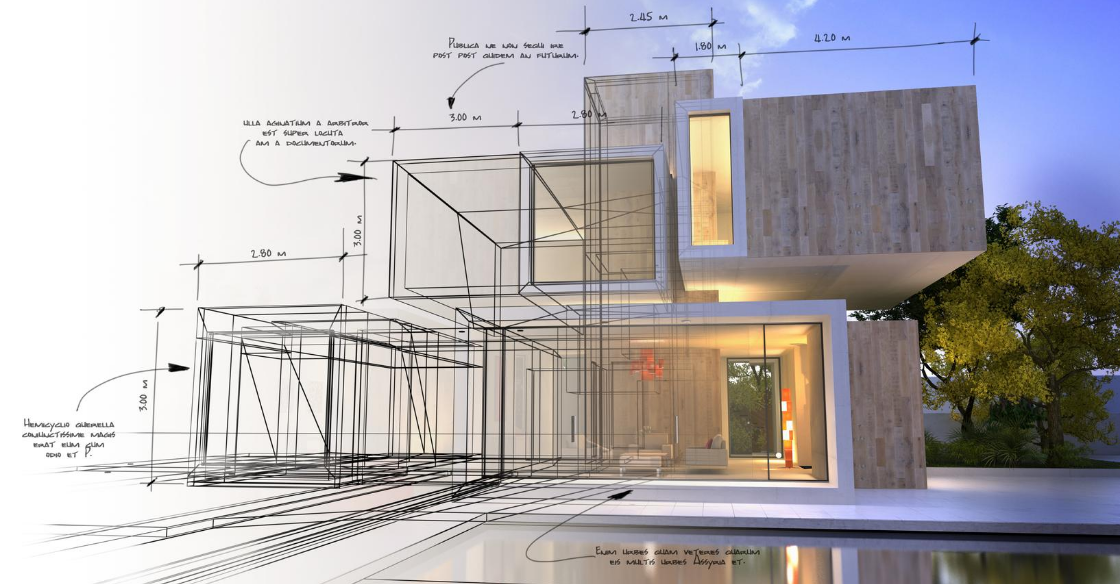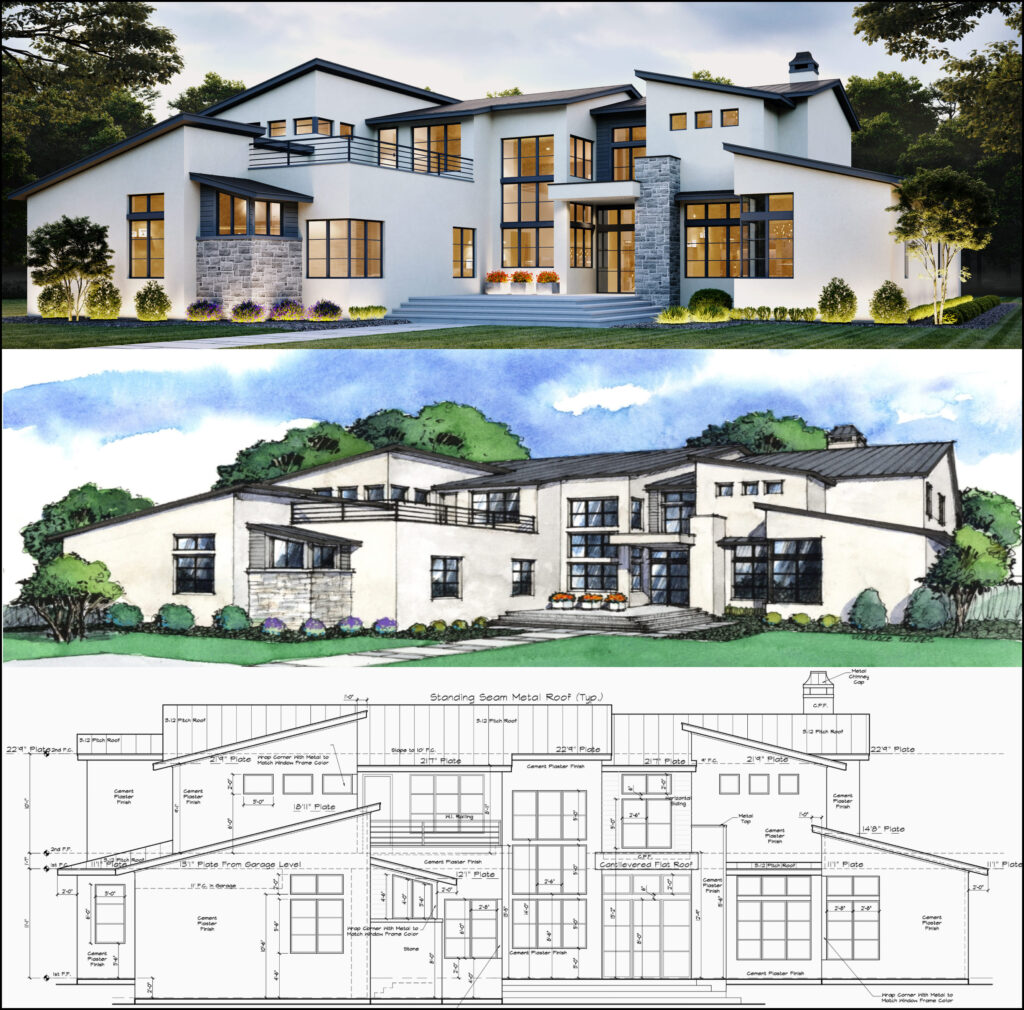Changing Rooms: The Vision of CDA Architects for Modern Living
Changing Rooms: The Vision of CDA Architects for Modern Living
Blog Article
A Comprehensive Summary of Building Designs and Their Impact on Modern City Preparation and Growth
Architectural styles have actually long served as a mirror to the social values and technological innovations of their time, playing an essential role in forming modern-day city preparation and development. From the grandeur of Neoclassicism to the practical approach of Brutalism, each style has actually introduced unique ideas that influence city aesthetic appeals and performance.
Historic Introduction of Building Designs

As societies transitioned via the Center Ages, Gothic architecture arised, defined by its verticality and elaborate detailing, matching the spiritual desires of the era. The Renaissance noted a resurgence of classical perfects, merging art and style in cutting-edge means that influenced subsequent designs throughout Europe.

Today, building styles remain to evolve, driven by globalization and sustainability worries, mirroring a vibrant interplay between heritage and technology. This historic overview emphasizes the value of design as a mirror of social advancement and as a driver for city development.
Secret Architectural Styles Explained
The diversity of building styles shows the myriad influences that shape our constructed environment, each personifying distinct attributes and social values. Trick architectural designs include Timeless, Gothic, Baroque, Innovation, and Postmodernism, each standing for distinct historic contexts and visual viewpoints.
Classic design, rooted in old Greece and Rome, stresses proportion, proportion, and the use of columns (cda architects). In contrast, Gothic design, growing in the center Ages, is identified by sharp arcs, ribbed safes, and flying buttresses, developing an angelic top quality in sanctuaries. Baroque style, arising in the 17th century, is noted by majesty, elaborate ornamentation, and a dynamic interplay of light and darkness
Innovation, which gained momentum in the early 20th century, prioritizes function over form, utilizing brand-new products like steel and glass to develop minimal structures. Postmodernism, reacting against the austerity of Innovation, welcomes eclecticism and historic recommendation, commonly integrating lively aspects and irony.

Impact on Urban Preparation
In shaping the growth of cities, architectural designs substantially affect metropolitan preparation decisions. The choice of architectural design commonly dictates the aesthetics, performance, and overall character of city atmospheres. Innovation, with its emphasis on minimalism and capability, encourages open areas and the assimilation of technology, shaping city formats that focus on efficiency and availability. Alternatively, conventional styles might stress historical preservation, causing city designs that maintain cultural heritage and promote pedestrian-friendly settings.
In addition, building designs can influence zoning regulations and land use policies. Urban planners must consider the prevailing architectural trends when developing districts, guaranteeing that new advancements balance with existing structures. This consideration cultivates natural city landscapes and boosts area identification.
The application of particular architectural styles can also affect socioeconomic variables within a city. Premium contemporary designs might draw in affluent homeowners and services, leading to gentrification, while much more inexpensive real estate options may focus on functional and sustainable layouts to fit varied populations. cda architects. Ultimately, the interaction between building designs and metropolitan preparation produces dynamic cities that show both historical context and contemporary needs, forming the lived experiences of their inhabitants
Sustainability and Modern Style
Building designs play an essential role in dealing with modern challenges, specifically in the realm of sustainability. As metropolitan locations broaden and ecological problems magnify, contemporary style significantly welcomes sustainable style principles that prioritize power efficiency, resource preservation, and marginal eco-friendly influence.
Contemporary building movements, such as biophilic style and green design, supporter for structures that balance with their surroundings, utilizing all-natural materials and advertising biodiversity. These designs frequently incorporate renewable resource resources, such as photovoltaic panels and wind generators, to minimize dependence on nonrenewable fuel sources and reduced carbon footprints.
Furthermore, the assimilation of advanced technologies, such as wise structure systems, boosts energy administration, maximizing source use while making sure owner comfort. Innovative water management strategies, consisting of rainwater harvesting and greywater recycling, further add to sustainable city environments.
Significantly, sustainability prolongs past ecological issues; it incorporates social and financial measurements also. By promoting area wellness and promoting inclusivity, modern building styles align with sustainable advancement goals. The evolution of building methods proceeds to form resistant cities that not only fulfill the needs of the present but additionally secure the future for generations to come.
Community Interaction in Style
Neighborhood involvement in design serves as a vital bridge between engineers and the populaces they offer, making sure that Visit This Link the developed environment shows the requirements and desires of its individuals. This collaborative procedure invites community members to contribute their insights and preferences, cultivating a sense of possession and obligation toward the areas they occupy.
Reliable neighborhood engagement utilizes various techniques, such as workshops, surveys, and public discussion forums, to gather varied perspectives. These strategies help with a two-way discussion, allowing engineers to understand regional contexts while empowering citizens to articulate their issues and needs. This inclusivity not here only improves the layout high quality yet also promotes social equity by resolving the distinct obstacles faced by marginalized groups.
In addition, community interaction can bring about innovative options that could not emerge in a conventional layout procedure. By incorporating regional understanding and social worths, engineers can develop spaces that resonate even more deeply with customers, improving functionality and sustainability. Eventually, prioritizing area interaction in design procedures leads to environments that support social communications, assistance health, and reinforce community ties, thus playing a crucial duty in shaping modern urban landscapes.
Final Thought
Building designs have actually exceptionally affected contemporary city preparation and advancement, showing advancing social and technical contexts. The assimilation of historic visual appeals with contemporary requirements fosters urban environments that prioritize sustainability and community engagement. As cities continue to expand and adjust, the recurring discussion between architectural heritage and modern design principles will Recommended Site certainly stay necessary in producing inclusive, lively areas that enhance lifestyle and advertise social equity. The future of city advancement depend upon this harmonious equilibrium.
Report this page